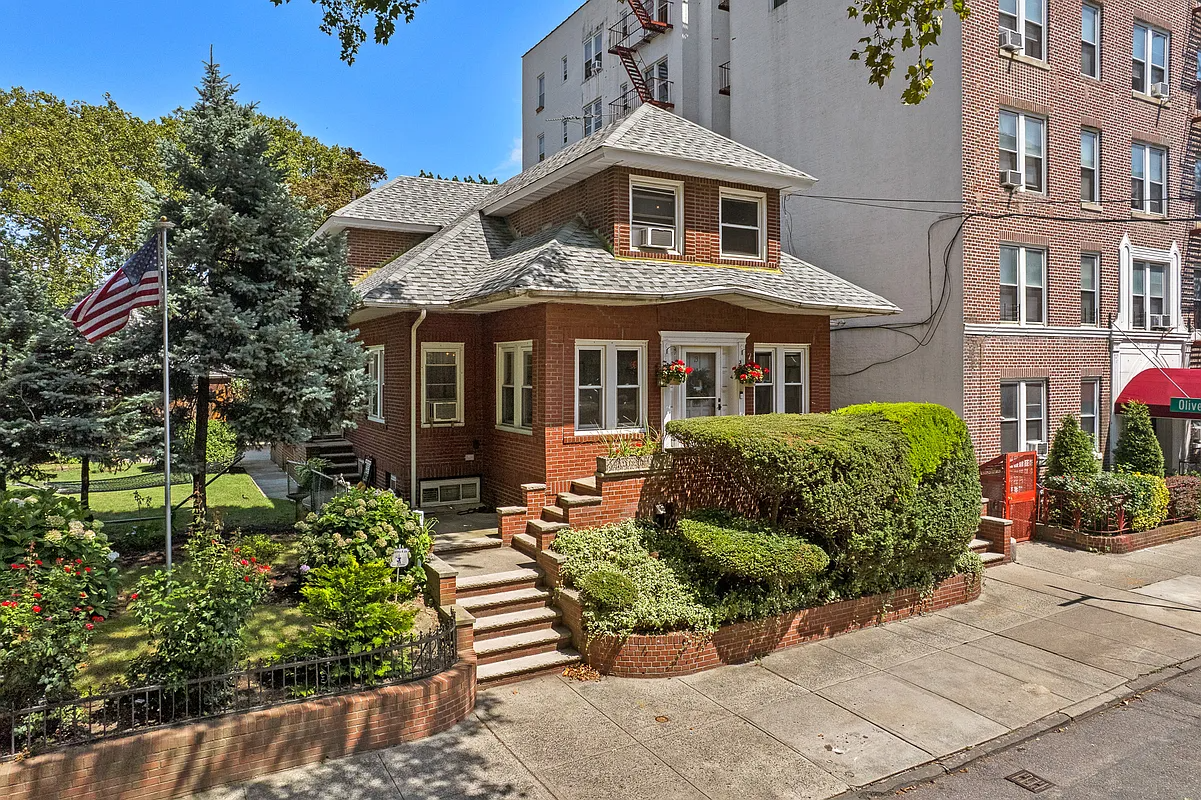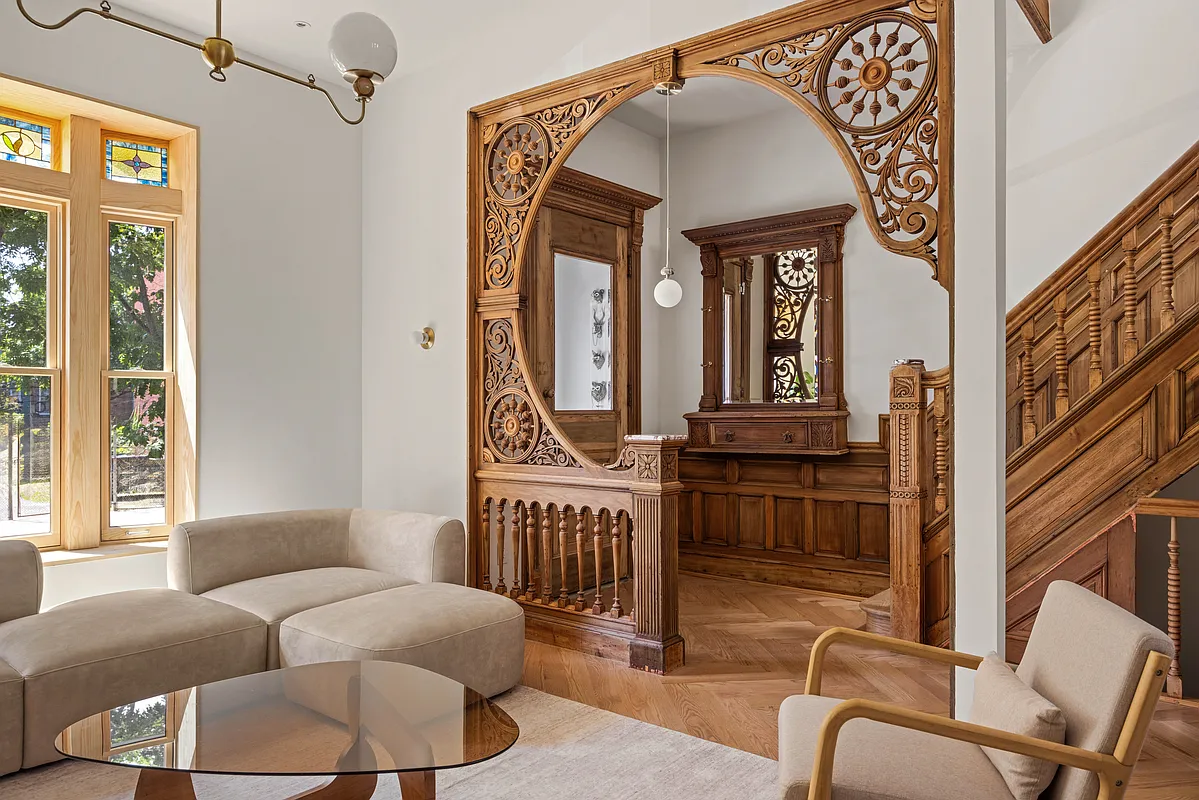Details on the Borough Hall Skyscraper District
The creation of the Borough Hall Skyscraper District had been in the works for at least five years (we reported on it being discussed at a Brooklyn Heights Association meeting back in 2005) before it was officially presented at a Landmarks hearing on October 26. But we had yet to see a proposed map of…


The creation of the Borough Hall Skyscraper District had been in the works for at least five years (we reported on it being discussed at a Brooklyn Heights Association meeting back in 2005) before it was officially presented at a Landmarks hearing on October 26. But we had yet to see a proposed map of the district until Community Board 2 sent out the materials yesterday for next Tuesday’s meeting. (Turns out it’s been available on the LPC site for a while though.) In addition to running the map above, we’ve cut-and-pasted the text of the district description that was also included in the mailing below. We’d be surprised if it wasn’t ultimately approved, but, as Crain’s and The Post have pointed out, not everyone is wild about the idea.
In the first half of the nineteenth century, especially following the chartering of the City of Brooklyn in 1834 and the completion of its new City Hall in 1848, a distinct civic and commercial center began to crystallize along the eastern edge of residential Brooklyn Heights. As the city continued to grow during the 1850s and 1860s—in the process becoming the nation’s third-most populous urban area—the streets immediately adjacent to City Hall were taken over almost exclusively by businesses.
In the later decades of the nineteenth century transportation improvements further encouraged commercial development in the area. The Brooklyn Bridge, which opened in 1883, directly connected the neighborhood with Manhattan’s financial center. Soon newer—and often much taller—buildings began to rise on the surrounding streets, including the impressive Romanesque-Revival Franklin Building that survives at 186 Remsen Street.
Brooklyn’s commercial heart continued to grow in the years following the consolidation of Great New York in 1898. The Temple Bar Building, for example, was erected in 1901 at the corner of Court and Joralemon Streets and was intended to attract the city’s leading lawyers to the borough. Other office buildings soon followed including the speculative venture at 32 Court Street that was completed in 1918.
The conception and construction of the Brooklyn Municipal Building—originally planned in 1909 but not completed until 1927—lead many to speculate that the area surrounding Brooklyn’s Borough Hall would become a financial center to rival that of Lower Manhattan. The area’s tallest and most architecturally intricate skyscrapers were erected during this period, particularly the stately, 35-story Montague-Court Building at 16 Court Street and the handsomely detailed Brooklyn Chamber of Commerce Building at 75 Livingston Street, both completed in 1927.
The proposed Borough Hall Skyscraper Historic District, comprising approximately 20
properties, is characterized primarily by tall commercial buildings erected in the late nineteenth and early twentieth centuries. Designed in a range of styles from the Romanesque-Revival to the Beaux-Arts to the Modern, the structures in the study area represent the work of an impressive group of architects including Helmle, Huberty & Hudswell; McKenzie, Voorhees & Gmelin; George L. Morse; the Parfitt Brothers; Schwartz & Gross; H. Craig Severence; and Starrett & Van Vleck. It contains many of the borough’s most architecturally distinguished business buildings, as well as its two most significant civic structures—the Brooklyn Municipal Building and the individually-designated Brooklyn Borough Hall.





I think the issue is not the Brooklyn had arrested development but that over the years the concentration of resources has been- and still is- into Manhattan. That includes mass transit. The appeal of Brooklyn was its neighborhoods- Manhattan was the place you go to work, Brooklyn the place you came home to.The transit lines are too spread out in the outer boroughs- that’s not the fault of preservationists, but the fact that NYC revolves around Manhattan- they are spending an obscene amount of money on building a short leg of a new subway line in Manhattan, while car owners will be charged to drive into Manhattan. Yet those car owners may not have good mass transit access – the outer boroughs pay for Manhattan, and do with less services, mass transit, and everything else.
Scott;
Let me add one thing to your excellent points above.
It is ironic (to me) that Minard mentions the environmental movement, because the preservationist movement is skating awfully close to being anti-green these days. Looking at Brooklyn, they are trying to freeze development in precisely the areas that are well-served by the subways, and are closer in to the core.
Brooklyn is something of an anomaly. In a normal growing city, the older core areas are continually redeveloped to accommodate the city’s growth. While this is indeed what happened in Manhattan, it did not occur in Brooklyn because of its arrested development (the bad years). We are faced with an anomaly of wide swaths of the central portions of Brooklyn that are well-served by the subways and are covered with townhouses, rather than taller structures.
Where do the preservationists want to channel growth? Canarsie? Flatlands? Other areas that are ill-served by mass transit?
Moreover, I still want to know the criteria by which we decide what is merely old and pleasant-looking from that which is truly significant and worthy of preservation.
Montrose;
I didn’t say that I don’t like the 9th Street building – I said that it is highly non-contextual, but that never seems to come up when discussing old buildings.
I don’t see the equation to the environmental movement.
Protecting the environment has clear health and ecological benefits.
Protecting old buildings (and their comments) is a matter of personal taste. I compare the historic preservation movement more to the National Park movement in the first half of the 20th century.
I am in favor of specific buildings and areas being protected. The US has a bad habit of abandoning and forgetting the past, and being able to experience historical buildings is a good thing. However, I feel strongly that healthy cities need to be able to change, and that includes changes in building styles.
In some areas of the city, I think that historic districts when combined with down zoning and similar efforts are getting close to the point where they will hurt the overall health of the city by locking in land in desirable areas to one use and preventing change.
Benson, the preservation movement, and preservationists themselves are not a monolith. Just like any group or even political party, you’ve got a wide range of ideas under that umbrella. You’ve got those who really do want to preserve every old brick on up to those who only want to preserve the elite best of the best, built by and for the rich. Minard, Blayze, WBer, myself, and many others are not contracturally obligated to toe a party line, because there is none. What is shared is a respect and admiration of architecture, craftsmanship and artistry. And since architecture affects our everyday life, why not protect that which is worthy of continued existence? If it didn’t matter, then we’d all be quite happy to live in Soviet style apartment blocks, or a city of high rise project buildings.
You think it’s amusing that people love the blue house on 9th St.? It’s not just because it is old. If you don’t get WHY people like it, regardless of your personal feeling about it, or why it’s important that it has survived, then trying to explain preservation is futile.
I am not saying the historic districts are always bad, but I think their beneficial role has been way overstated.
For instance in Boerum Hill, around 4.5 blocks are in the district. The areas outside the district have not been “clear cut,” as some people seem to think would happen without protection.
By the time that the historic district movement took hold, the large scale urban renewal movement was already almost completely dead, both in NYC and across the country.
I don’t see why people think that the preservation movement is over-reaching. It is like saying the environmental movement is cleaning up too many rivers. “The Bronx river should stay polluted, you’re over-reaching!”
Montrose Morris posts pictures on this blog every day of wonderful buildings that up to now have been completely off the radar of the landmarks Commission. Are they not worthy?
It all boils down to treating the man-made environment with the same care and respect that we would like to see the natural environment treated. We do not have great mountains or desert cliffs here, we do have wonderful architecture and man-made parks. Taking care of them and making sure they don’t erode or fall apart is what we call “preservation”. It is not trying to rob anyone of rights or choices. Its just trying to take care of our environment, aka our neighborhoods.
g_man, thanks for the reference.
Looking over the document, it looks like for Park Slope, prices in the district went up around 20% more than houses near the district over 27 years, while in Fort Greene and Stuysevant Heights, there was no real difference between houses in the district and outside.
Citywide, prices inside districts went up more than prices outside districts, although the report states “Finally, there is not sufficient evidence to conclude that
districting itself causes higher prices or greater price appreciation.”
This could fit in with my theory that historic districts are a result of well-off areas, not a cause.
It was disappointing that the document only covered 1, 2 and 3 family residential dwellings.
Because of this, the report leaves out the impact to commercial and larger properties, and also does not cover the impact when a lot is changed from one use to another.
Scott – the studies I have seen (which pre-date the latest boom/bust) are pretty consistent in finding that designated areas generally appreciate in value faster than non-designated areas. More important, designated areas tend to hold their values better in downturns than non-designated areas.
Fort Greene and Clinton Hill and Boerum Hill were by no means “better off” neighborhoods when they were designated. Nor for that matter were Soho or Tribeca or Ladies’ Mile. I don’t have the data, but would certainly argue that without the preservation of areas such as all of those. If those areas had continued to be clear cut, as was their fate in the 40s through early 60s, the city might have continued to suffer urban flight.
Even beyond NYC, most urban neighborhoods that revitalize are those that have historic buildings. St. Louis is one such example, so is Miami Beach. The impetus is rehabilitation, not new construction.
BHS, the IBO has studied the relationship between historic districts and property value and its report can be found on the agency’s website.